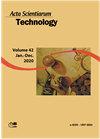Skin cancer classification dermatologist-level based on deep learning model
IF 0.6
4区 综合性期刊
Q3 MULTIDISCIPLINARY SCIENCES
引用次数: 5
Abstract
Medical image analysis is a significant burden for doctors, therefore, it is used to supplement image processing. Many medical images are assumed to be diagnosed as accurately as healthcare experts when the precision of image detection and recognition in an image processing approach matches that of a human being. Artificial Intelligence (AI) based predictive modelling is an important component of many healthcare solutions. This paper develops and implements a neural network-based method for skin cancer prediction to expose the neural network's strength in this field. This method determines which form of deep learning is best for diagnosing diseases with an accuracy exceeds human ability in terms of speed and accuracy, and determines the optimum number of layers and neurons in each layer for both Convolutional Neural network (CNN) and Deep Neural Network (DNN) to obtain the best possible precision. The results of the proposed method showed impressive results, especially for CNN. There is a clear superiority of CNN over DNN. The CNN (which relies on convolution filters) provides great results in extracting features due to the focus on the intended area of the image without the surrounding area region of interest. This led to a remarkable decrease in the number of parameters and the speed of attaining results with higher accuracy. The results indicated that CNN has a high accuracy rate compared with the other existing methods where the accuracy rate of CNN is 98.5%.基于深度学习模型的皮肤科皮肤癌分类
医学图像分析对医生来说是一个很大的负担,因此,它被用来补充图像处理。当图像处理方法中的图像检测和识别精度与人类的精度相匹配时,许多医学图像被认为与医疗保健专家一样准确地诊断出来。基于人工智能(AI)的预测建模是许多医疗保健解决方案的重要组成部分。本文开发并实现了一种基于神经网络的皮肤癌预测方法,揭示了神经网络在该领域的优势。该方法确定了哪种形式的深度学习最适合诊断疾病,其速度和准确性超过人类的能力,并确定了卷积神经网络(CNN)和深度神经网络(DNN)的最佳层数和每层神经元的最佳数量,以获得尽可能好的精度。该方法的结果令人印象深刻,特别是对于CNN。CNN比DNN有明显的优势。CNN(依赖于卷积滤波器)在提取特征方面提供了很好的结果,因为它关注的是图像的预期区域,而不是感兴趣的周围区域。这导致了参数数量的显著减少和获得更高精度结果的速度。结果表明,与现有的其他方法相比,CNN具有较高的准确率,CNN的准确率为98.5%。
本文章由计算机程序翻译,如有差异,请以英文原文为准。
求助全文
约1分钟内获得全文
求助全文
来源期刊

Acta Scientiarum-technology
综合性期刊-综合性期刊
CiteScore
1.40
自引率
12.50%
发文量
60
审稿时长
6-12 weeks
期刊介绍:
The journal publishes original articles in all areas of Technology, including: Engineerings, Physics, Chemistry, Mathematics, Statistics, Geosciences and Computation Sciences.
To establish the public inscription of knowledge and its preservation; To publish results of research comprising ideas and new scientific suggestions; To publicize worldwide information and knowledge produced by the scientific community; To speech the process of scientific communication in Technology.
 求助内容:
求助内容: 应助结果提醒方式:
应助结果提醒方式:


